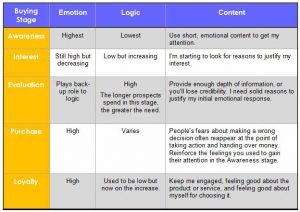What Happened To Account-Based Marketing?
Once upon a time, account-based marketing (ABM) was a strategy — a very smart strategy, aimed at the biggest, most valuable accounts.
Gartner defined it as “a go-to-market strategy targeting certain accounts with a synchronized, continuous set of marketing and sales activities. ABM activities engage those accounts and individuals through all stages of the buyer journey.”
But somewhere down the line, ABM became a technology platform.
Where did it go wrong?
You could point to one of the leaders in the space, DemandBase. It started in the enterprise segment with “One to One Account ABM” intending to create and execute highly personalized programs against the largest and most strategically important accounts.
But that quickly expanded down the account pyramid to include “One-to-Few ABM” and “One-to-Many ABM,” which leveraged technology to tailor or personalize marketing campaigns for specific accounts.
It didn’t stop there. To enable the “continuous set of marketing and sales activities” at “all stages of the buyer journey” as defined by Gartner, we got even more technologies.
Cisco’s martech stack has no less than 13 tools being used at the “Aware” stage of the buyer’s journey. There are 7 additional tools at the “Shop/Buy” phase, 3 more at “Install” and finally, another 4 at the “Renew” — for a total of 27 different tools used for enterprise ABM alone.
Now, for the great irony of it all: because many of the tools are being used for specific purposes and/or at defined stages, the performance analytics are optimized for that specific task and/or to measure the performance of a channel. They are siloed.
It is very difficult to integrate them to view the entire progression of a buyer from one phase to the next, even if you are using Salesforce across stages.
And an even greater challenge is that it is impossible to see the movement of a purchase decision across a buying group.
The focus on measuring activity or engagement against an individual at a certain stage has caused us to lose sight of the objective, which is to sell something.
Finally, because the machine requires fuel to continually run, we produce an overabundance of content that typically lacks relevance and/or actionable insight.
Caught in the cycle of what can we produce versus what buyers need, we work for the machines rather than have them work for us. This will get worse with generative AI.
The momentum is such that it is nearly impossible to course-correct. What was once a strategic approach has now been sacrificed to the lords of scale.
ABM’s inability to provide real insight into the progress of account-level buyers within the journey, has left us with what we believe to be “signals” of intent — an assumption that a potential buyer has reached a certain stage in the journey because of an action. Instead of marketing filtering those responses to find real intent they are routed to sales to sort through.
The strategic value of ABM has been marginalized, if not lost completely. It is now better defined as activity-based marketing and/or acquisition-based marketing.
And unfortunately, there is no tool that can fix it.
(5)
Report Post





